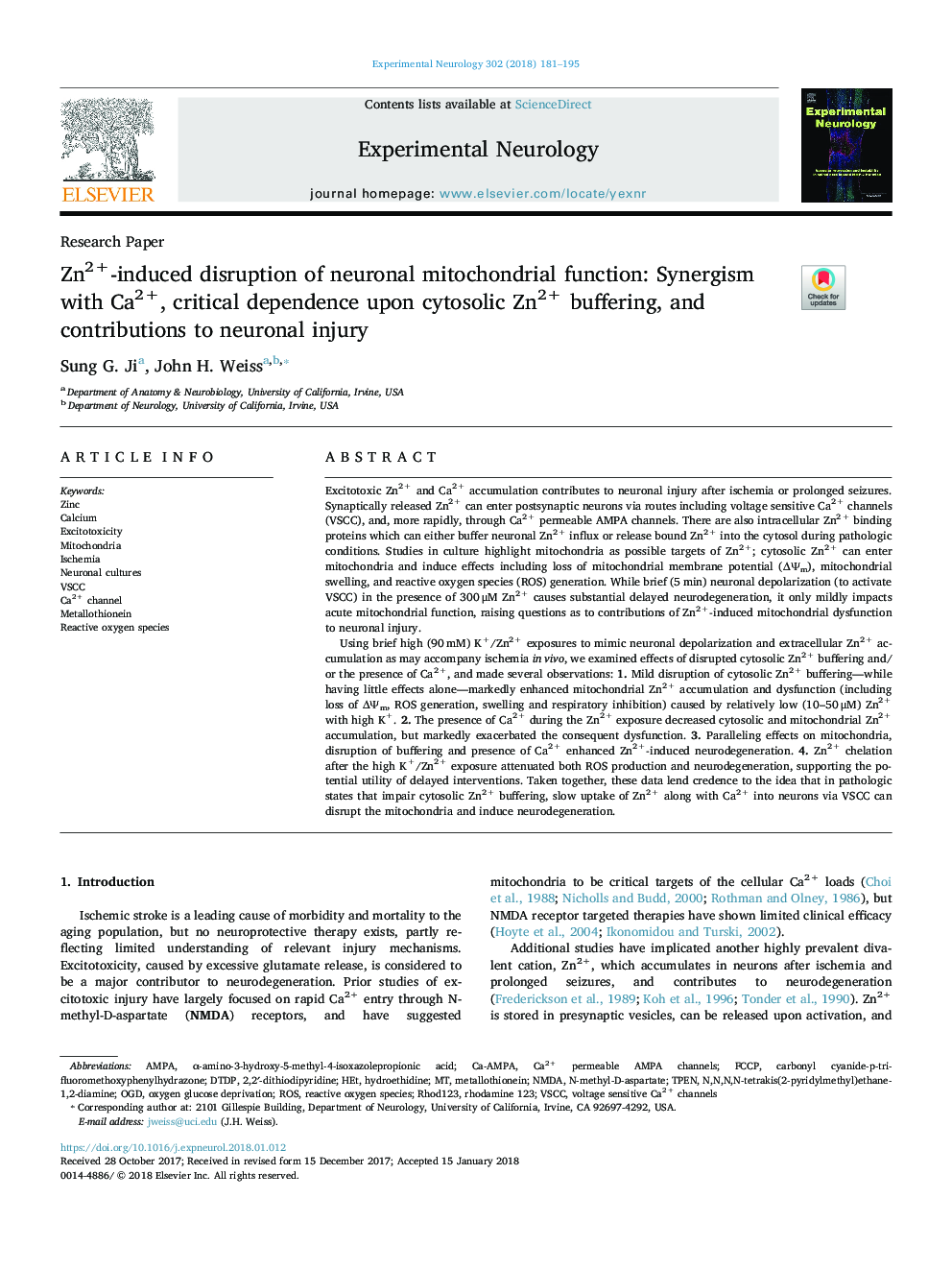| Article ID | Journal | Published Year | Pages | File Type |
|---|---|---|---|---|
| 8684694 | Experimental Neurology | 2018 | 15 Pages |
Abstract
Using brief high (90â¯mM) K+/Zn2+ exposures to mimic neuronal depolarization and extracellular Zn2+ accumulation as may accompany ischemia in vivo, we examined effects of disrupted cytosolic Zn2+ buffering and/or the presence of Ca2+, and made several observations: 1. Mild disruption of cytosolic Zn2+ buffering-while having little effects alone-markedly enhanced mitochondrial Zn2+ accumulation and dysfunction (including loss of âΨm, ROS generation, swelling and respiratory inhibition) caused by relatively low (10-50â¯Î¼M) Zn2+ with high K+. 2. The presence of Ca2+ during the Zn2+ exposure decreased cytosolic and mitochondrial Zn2+ accumulation, but markedly exacerbated the consequent dysfunction. 3. Paralleling effects on mitochondria, disruption of buffering and presence of Ca2+ enhanced Zn2+-induced neurodegeneration. 4. Zn2+ chelation after the high K+/Zn2+ exposure attenuated both ROS production and neurodegeneration, supporting the potential utility of delayed interventions. Taken together, these data lend credence to the idea that in pathologic states that impair cytosolic Zn2+ buffering, slow uptake of Zn2+ along with Ca2+ into neurons via VSCC can disrupt the mitochondria and induce neurodegeneration.
Keywords
2,2′-dithiodipyridineDTDPVSCCTPENAMPAN-methyl-d-aspartateOGDFCCPNMDAHETROSα-amino-3-hydroxy-5-methyl-4-isoxazolepropionic acidexcitotoxicityIschemiaRhodamine 123Neuronal culturesZincMetallothioneinOxygen glucose deprivationMitochondriaHydroethidineCa2+ channelcarbonyl cyanide-p-trifluoromethoxyphenylhydrazoneCalciumReactive oxygen species
Related Topics
Life Sciences
Neuroscience
Neurology
Authors
Sung G. Ji, John H. Weiss,
